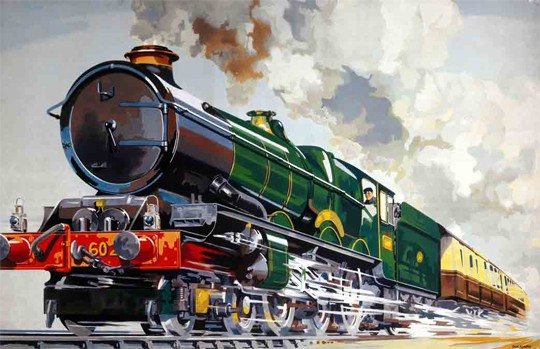
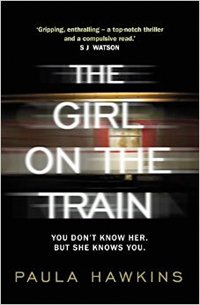 One of this month’s big crime releases is The Girl on the Train by Paula Hawkins. And when you think about it, railways have often featured as a backdrop in crime fiction. Murder on the Orient Express is, perhaps, the archetypal Golden Age crime novel, after all. But why has train travel been such a popular motif in the genre?
One of this month’s big crime releases is The Girl on the Train by Paula Hawkins. And when you think about it, railways have often featured as a backdrop in crime fiction. Murder on the Orient Express is, perhaps, the archetypal Golden Age crime novel, after all. But why has train travel been such a popular motif in the genre?
Perhaps it’s the romance. Few images trigger the emotions quite like a train arriving or departing at a station platform. The heartbreak of departure or the joy of arrival simply aren’t the same with cars, boats or planes. In the days when trains were the most common form of long distance travel, a railway carriage could be its own dramatic stage setting.
And then there are the stations. Perhaps it’s a huge, bustling metropolitan terminus, an amazing cathedral of human possibility, with light streaming down through its glass roof. Maybe, more intimately, it’s a sleepy country whistle-stop which a half-decent author will turn into a sinister crime scene.
Having said that, where the railway features in The Girl on the Train, it’s more about a dreary suburban commute than romance, or menace. Before we look in detail at five crime novels where trains, tracks and stations are fundamental to the plot, let’s travel station to station across the crime fiction rail network and visit a number of books where the railway motif has been used to good effect, without dominating the story.
 Narrow escapes
Narrow escapes
In John Buchan’s 1915 classic adventure tale The 39 Steps, the fugitive Richard Hannay has several narrow escapes involving trains, but it has to be said that the 1935 Hitchcock movie made much more of the railway element – memorably on the Forth Bridge – as Hannay battles his pursuers. Continuing the Hitchcock thread, the great director made a memorable film of Patricia Highsmith’s 1950 novel, Strangers on a Train, where two men with murder in mind meet on a train. They decide to swap victims, thus – in theory – denying the police any obvious motive.
Ian Fleming was much too good a writer to miss out on the unique opportunities afforded by an encounter on the world’s most romantic train. In From Russia With Love (1957), Commander Bond meets counterfeit British agent Captain Nash on the Orient Express and – immortalised in film by Sean Connery and Robert Shaw – sparks fly.
We associate Dick Francis with horses and skullduggery but one of his best books, The Edge (1988), is set on a train crossing Canada. On board are horses, jockeys and owners intent on promoting the sport across the country. Unfortunately, not all those aboard have benign intentions, and mayhem ensues. A famous London station is the setting for Agatha Christie’s 4-50 From Paddington. A friend of Miss Marple is taking the train to visit her. As the friend looks across the platforms, she sees what might be a murder on a train. She reports the deed, but there is no evidence of a crime. Inevitably, among the usual collection of aristocratic misfits and malcontents, a body is eventually found, and Miss Marple solves the case.
Five of the best railway-based mysteries
Right, then… all aboard?
 Murder on the Orient Express by Agatha Christie (1934)
Murder on the Orient Express by Agatha Christie (1934)
No single train journey comes close in the mystique and romance stakes to the late lamented Orient Express. In its purest form, it was a journey from Paris to what was then Constantinople, complete with elegant dining facilities and sleeper carriages. With the potential to be a locked-room mystery on wheels, small wonder that many writers – including Graham Greene and Ian Fleming – were drawn to it. The absolute classic is, of course, Agatha Christie’s wonderful 1934 tale. Hercule Poirot is on the train, heading west, and has to investigate the murder of a particularly unpleasant American traveller. On the off chance that you don’t know who dunnit, let’s just say that Christie comes up with one of the more audacious solutions in crime fiction!
Buy now on Amazon
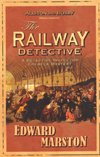 The Railway Detective by Edward Marston (2004)
The Railway Detective by Edward Marston (2004)
Marston’s tales are set in the middle years of the 19th century, when railways were still at the cutting edge of technology and not yet embedded into public life as they would be 50 years later. The railway detective is Inspector Robert Colbeck, a former barrister and now an officer with the fledgling Metropolitan Police. In the first novel in the series he investigates the meticulously planned robbery of a northern-bound mail train and, in the process, uncovers a sinister web of intrigue and corruption. The Colbeck novels focus on the fact that with a new phenomenon like the railway, the forces of law and order are presented with hitherto unheard of crimes.
Buy now on Amazon
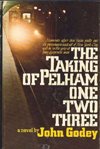 The Taking of Pelham One Two Three by John Godey (1973)
The Taking of Pelham One Two Three by John Godey (1973)
John Godey was the pen-name of prolific crime writer Morton Freegood. His account of the hijacking of a New York subway train was the first – and probably the best – novel to exploit the unique combination of thrill-triggers contained in the concept of a train containing hundreds of hostages, trapped underground by desperate men, and beyond the reach of law enforcement. There was a successful film made of the book in 1974, and another in 2009. The title refers to the time at which the ill-fated train left Pelham Bay Park Station – 1.23pm. Such was the impact of the novel and the subsequent film that the transport authorities in New York made sure that no train was scheduled to leave that station at that particular time for many years.
Buy now on Amazon
 La Bête Humaine by Emile Zola (1890)
La Bête Humaine by Emile Zola (1890)
In this psychological thriller the Parisian author recognised the advantages of setting a story within a railway system. The characters in the story all appear in other Zola novels, such as Germinal and Nana. We have Étienne Lantier, a homicidal and rapacious engine driver, Roubaud, the deputy station master at Le Havre and his seductive wife Séverine. A complex tale of murder, jealousy and marital infidelity ends with the outbreak, in 1870, of the Franco-Prussian War, when a train packed with optimistic French soldiers heading for the front is left driverless as Lantier, guilt ridden over his misdeeds and his part in the demise of Roubaud and Séverine, falls to his death.
Buy now on Amazon
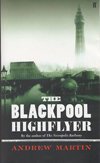 The Blackpool Highflyer by Andrew Martin (2004)
The Blackpool Highflyer by Andrew Martin (2004)
We first met Jim Stringer in The Necropolis Railway, where he becomes involved in a mystery concerning the funeral trains which ran from a special station near Waterloo to the vast Surrey cemetery at Brookwood. Now, having married his then landlord’s beautiful daughter, he is based at the northern railway city of York. When an excursion train heading for the seaside resort of Blackpool is deliberately derailed, Stringer must investigate a death – in which he may be culpable – and a sinister conspiracy. The Blackpool Highflyer is deceptively gentle, but has moments where there is a genuine darker edge. Our review of a later Jim Stringer mystery – The Baghdad Railway Club – can be read here.
Buy now on Amazon
The end of the line
By the final quarter of the 20th century, with steam engines having all but disappeared from the world’s railway systems, the popularity of contemporary railway-based plots has dwindled but we have reviewed recent thrillers set beneath the streets of London. In Tim Weaver’s Vanished, a private investigator searches for a man who went missing somewhere between two underground stops. His search takes him hundreds of feet down below the busy streets, and into the ghostly world of abandoned tube stations. In Baptism by Max Kinnings, a deranged religious fundamentalist hijacks a Northern Line train, and it takes a blind detective and the courage of the train driver to foil a potential disaster. And, of course, there’s The Girl on the Train where a commuter witnesses wrongdoing from the train window and decides to look into it.
But now the engine driver is looking impatiently out his cab window, the porter is blowing his whistle, and the last passenger has scrambled aboard. Faces peer out from the carriage windows and, through the steam and the bustle, seek out their tearful lovers, wives, husbands and sons, left behind on the station platform. The Crime Fiction Express is heading out for its next adventure.







I’ve only read Murder on the Orient Express (and The Girl On The Train), but taking into account how much I love trains, the amount of time I spend in one, and my love for crime fiction, I should question myself why I haven’t read any of these. Thank you for the recommendations, from both a crime fiction and train lover 🙂
I would have to agree with Dashiell Hammett that the resolution of ‘Murder on the Orient Express’ beggers belief. The official solution that a person unknown entered the train while snowbound and killed the victim by multiple stabbings is ludicrous.
You could mention the use of a train in ‘Double Indemnity’ and in the film ‘The Lady Vanishes’ based on the novel ‘The Wheel Spins’ and in Dorothy L Sayers’ novel ‘The Five Red Herrings’ a train journey is part of the solution to the crime.